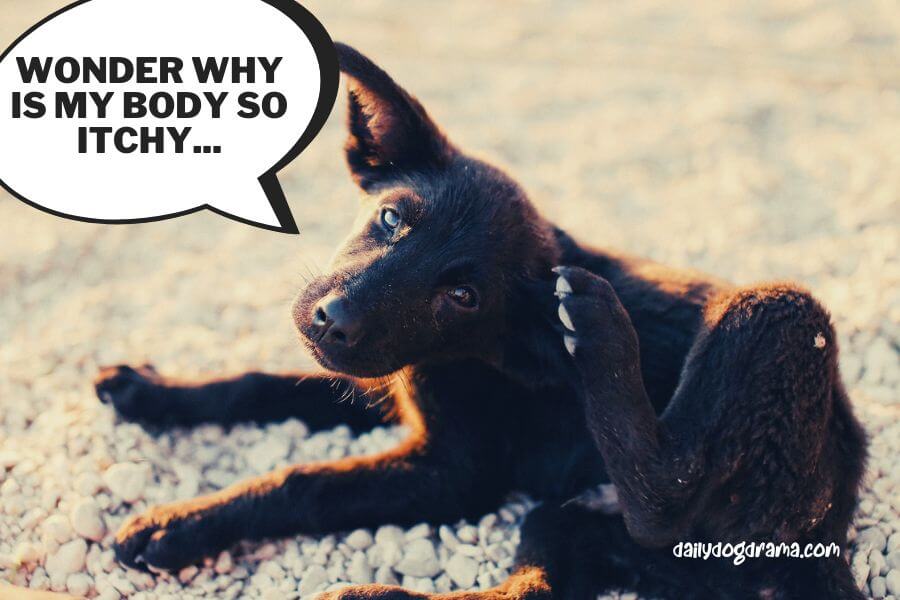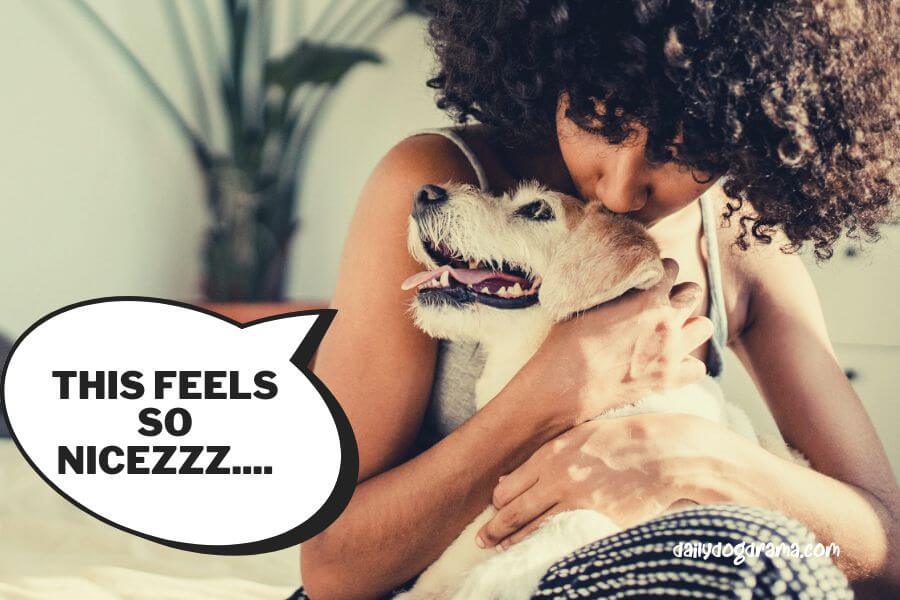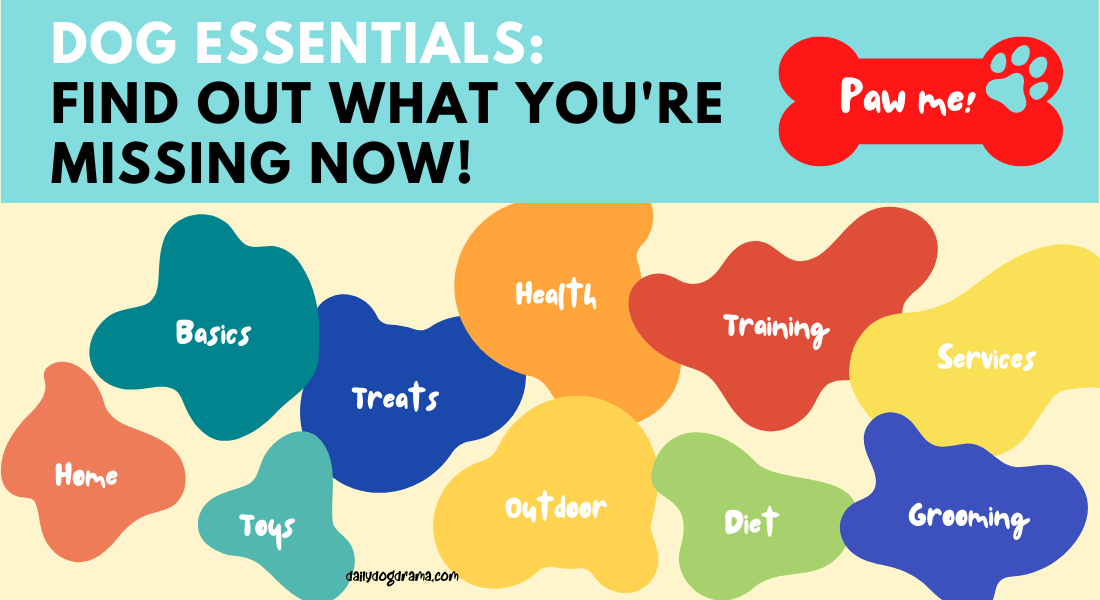Do you know what DOG ESSENTIALS you are missing out? Find out now!
Zack Keithy, our author, is a certified veterinarian technician (UC Blue Ash) for over 6 years (contact him here). The articles written here are based on his expertise and experience, combined with a review by our expert vet reviewers including Dr M. Tarantino. Learn more about us here.
Your dog’s spay incision is healing just fine, but she keeps scratching it with her hind leg. Why is this happening?
When your dog scratches at an incision, it likely means that the healing process has begun. The body will naturally produce a lot of scar tissue around the wound to help it heal faster and better. This is called “granulation,” and it will result in a small bump or knot under your pet’s skin where the incision was made.
The bump may look red or pink, but don’t worry—it will go away on its own as long as it is kept undisturbed and free from dirt.
It is totally understandable that you might be a bit nervous or feeling uncertain right now, but don’t worry.
This article will help you understand the risks and how to give your dog the best post-operative care.
Medical Questions? Talk to a Veterinarian 24/7.
Connect one-on-one with a licensed vet who will answer your questions in minutes.
*Article may contain affiliate links to retailers like Amazon and Chewy. Learn more on our disclosure page.
Why Do Female Dogs Scratch At Their Spay Incision?

When your dog gets spayed, it will be put under anesthesia. The vet then makes an incision in the abdomen below the belly button where they can remove the ovaries and uterus.
This is called a spay procedure (ovariohysterectomy) and it is actually very common among female dogs who are at least 6 months old.
While this procedure does come with some risks such as infection or bleeding, it’s still considered to be one of the safest ways for pet owners to prevent unwanted pregnancies in their dogs.
Scratching after surgery is perfectly normal, but it can cause big problems such as undoing the stitches, opening the wound, and getting infected.
Read on to learn the reasons why your dog might scratch at her incision. The following section will discuss the prevention techniques you can employ.
Doggy says, read this too: Steri Strips for Dogs: Can You Use Them?
Hair starting to grow back
Scratching at the incision may be the first sign that your dog’s body is beginning to grow hair again.
This can often cause itching, which is why it’s common for dogs to scratch their ears or paws after they’ve had surgery.
Coping with something new
Spaying is a pretty major procedure for any female dog, especially when you think of what it is going through.
Being put under anesthesia and a knife down your belly is not an experience that even humans can get used to, not to mention a small dog.
When they return, they are probably still groggy and in a state of confusion, and once the effects wear off, your dog will be curious to check out the new incision wound.
Doggy says, consider reading this too: Ingrown Dog Whisker [Evereything You Need To Know]
Environmental factors
I do not recommend that you let your dog out after spay surgery, but if you do, you need to know that the environment might also cause some discomfort to your dog.
As air and possibly dirt get into the wound area, it causes your dog to itch, which means it needs to scratch it!
Feeling anxious or in pain
In a way, dogs often exhibit behavior that is somewhat similar to us humans.
When we get anxious or nervous, we sometimes unwittingly perform a reflex action, like sticking our hands into our pockets, fiddling with a pen, or twirling our hair.
Similarly, dogs can be anxious or nervous and may perform an action like scratching themselves, or even just keeps sitting after getting spayed.
Your dog might also feel pain in the area of the incision wound and begin licking it.
There’s an infection (or other problem)
It’s important to know that if your dog begins licking or scratching excessively, there could be an underlying problem.
For example, if your dog has a wound that is not healing properly, it might need antibiotics or other medications such as Prednisone to prevent inflammation.
Other common causes of excessive licking include allergies to stitches, mites, fleas, and skin irritations.
Doggy says, read this too: Dog Stitches Not Dissolving: Do They Need Fixing?
How Can I Keep My Dog From Scratching After Being Spayed?

It’s important to make sure that your dog’s incision wound is healing properly and not infected, which means no scratching!
During the recovery period, you need to watch your dog closely for signs of infection, such as redness around the incision area, swelling, pain when touched, and discharge from the wound.
The following are some ways to help you prevent your dog from scratching after being spayed:
Keep your dog quiet
After surgery, it is important that your dog not jump or move around much until healing takes place.
Consider putting her in a crate where her movements will be restricted, but be sure to take her out and give it some TLC.
During this period, it is not advised to take her out for walks and playtime.
Doggy says, consider reading this too: Overgrown Dew Claws in Dogs
Keep her warm and comfortable
Dogs can easily feel cold after surgery, so make sure she has access to plenty of delicious food and water (just not too much too soon), as well as a soft bed where she can rest up without putting unnecessary stress on her incision site.
Also keep any drafty areas closed off completely, such as windows or doors that blow cold air into the room where she is resting post-surgery.
Although it’s tempting, do not bath your dog after spaying right away as that can delay the recovery process.
Doggy says, consider reading this too: Does Pine Sol Kill Fleas on Dogs?
Keep her supervised and let her wear something
A t-shirt is often the only thing you need to use to protect your girl.
It keeps the wound covered and prevents the stitches from coming off, but it might not deter a persistent scratcher.
That means you need to keep a close eye on her at all times, particularly in the first few days when the itch levels will be off the charts.
You can possibly use an old t-shirt or get something from the pet store or online.
If you are using an old shirt, ensure a snug fit by tying a knot so as to prevent it from hanging too loosely.
Doggy says, consider reading this too: Puppy Ears Changing? How to Correct it?
Use socks or boots
I never really liked the idea of letting my dog wear shoes, and it seems to make them so uncomfortable.
However, they do have instances when they are useful, like walking on the hot ground or in this case, preventing it from scratching at its incision site.
I recommend only using it when it is time to sleep and placing rugs around the room to prevent her from slipping and sliding.
Try a hot and cold relief pack
I heard about this from a vet and tried it myself previously.
A hot and cold relief pack is a great thing to have at home, especially when your dog is ill.
It can be used to relieve pain and swelling, and also help with the healing process for wounds.
Doggy says, consider reading this too: Puppy Shivering After Bath? [How To Stop It]
Anti-itch spray and cream
A good anti-itch spray and cream is also a must-have for any dog owner.
These products are great for when your dog gets into something it shouldn’t be, like poison ivy or bee stings.
In this case, they can help deter your dog from scratching and injuring itself.
Keep her on soft bedding for several weeks following surgery
Soft bedding will help prevent additional irritation on top of what she is already having.
It also prevents her from accidentally injuring herself or moving around too much.
This will help the healing process and keep your dog comfortable during this time of recovery.
Hire a dog sitter
If you have to leave your dog alone for a long period of time, it’s not a bad idea to hire a dog sitter.
This way, they can give her the extra care she needs and prevent her from being alone for too long, which could cause additional stress on top of what she already has.
Doggy says, read this too: Potty Training Regression After Spaying/Neutering [Now What?]
Frequently Asked Questions (FAQs)
How do you know if your dog popped a stitch?
Look for redness, swelling, and pain around the incision. You should also check for a small amount of blood or pus coming from the incision site. If you see either of these fluids coming out of the wound, it’s possible that your dog has popped a stitch.
What happens if my dog’s spay incision opens?
If your dog’s spay incision opens, she will be in pain. The wound will be red and swollen, and the dog may not be able to move or eat. You’ll need to bring her to the vet immediately if this happens so she can receive medical treatment.
What does an infected spay incision look like?
The most common symptoms of an infected spay incision are swelling, redness, heat, pain, discharge, and loss of appetite. These symptoms occur over several days but may appear very quickly in some cases. To diagnose an infected spay incision, your vet will likely perform a physical exam first followed by diagnostic tests such as taking blood work or performing x-rays to determine if the infection has spread through the body.
How do you know if something is wrong after spaying?
While some of these symptoms may be normal after spaying, they can also indicate an infection or other serious health issues. These include your dog becoming lethargic and appearing uninterested in food and play, a fever over 103 degrees Fahrenheit (39.4 Celsius), and thick discharge from the incision site that smells bad.
Doggy says, read this too: Pros and cons of neutering an Australian Shepherd
In Conclusion: Dog Scratching Spay Incision With Hind Leg
Whatever the reason, it’s important to keep an eye on your dog’s incision if they start scratching at it with their hind paws.
You do not want her to end up with its stitches coming undone and causing unnecessary damage.
The tips above should be sufficient to help your dog recover well during this period, but if you notice anything amiss, don’t hesitate to go see your vet.
You know your dog best after all!
Browse around our site to learn more dog care tips such as how soon can you groom a dog after neutering, can belly bands cause UTI in dogs, when can you shower your dog after vaccination and many more.
You’ve made it to the end, but I hope it’s not the end of our journey. We want to hear your voice! Share your thoughts, problems, suggestions, or anything related to your dog in the comments section. And don’t forget to join our newsletter today too.




